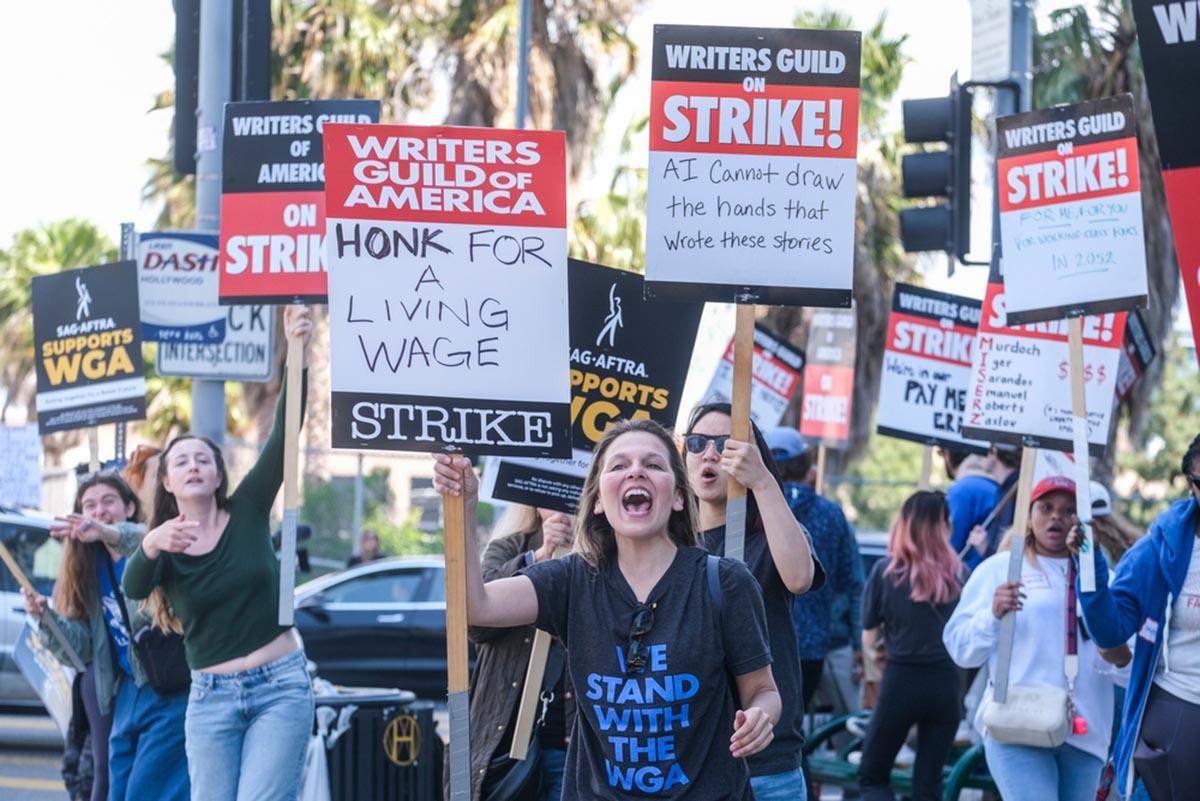Q&A: Strikes And Why Workers Are Having Their Moment in the Spotlight

From coast to coast, 2023 has been quite the year for organized labor in the United States. According to CNBC, 362,000 workers have gone on strike since January—and there’s no sign of it slowing down. While the Writers Guild of America has recently reached a deal after a nearly five-month-long strike, the Screen Actors Guild and the United Auto Workers have not, and today, Kaiser Permanente workers walked off the job, initiating the largest healthcare strike in history.
So why now? What’s brought many workers to their boiling point? The DU Newsroom sat down with Cindi Fukami, professor of management in the Daniels College of Business, who is an expert on labor unions to talk about organized labor in America.
This conversation has been edited for length and clarity.
When did strikes begin to happen in the United States?
Strikes started to happen in the very late 1800s. Labor unions had been introduced in Europe, and U.S. workers were starting to be interested in the benefits of belonging to a union. At first, unions were viewed suspiciously, and company owners did not take kindly to them. And at the time, unions were not protected by law. It took until the Depression and FDR’s New Deal that labor unions were made legal in the United States. Workers were given the right to form and join labor unions, and companies had to negotiate with the labor union that the workers chose, and negotiate over wages, hours and working conditions. And as part of that, workers were given the right to strike if an agreement was not reached.
Unions were once very strong. When did things begin to change?
The biggest reason for union decline was the shift from a manufacturing economy to a service economy. Unions had strength in manufacturing, but it was harder to organize service workers. Starting in the 70s, companies got a little savvier about dealing with labor unions. Companies started to fight against unions—by “busting” the union that was in place or by treating workers better. Generally, companies preferred to operate directly with employees, instead of through a union. The rise in union activity we are seeing today indicates that dissatisfaction with wages and treatment is on the rise.
Why do workers choose to organize?
Research indicates that workers vote to bring in a union because they’re dissatisfied with wages, hours and working conditions. And they believe a union will help them close the gap. When companies started looking at these findings, some decided to provide better wages, hours and working conditions so that workers would be less likely to favor union representation. Still, a union can provide “voice,” or the ability to have an influence on what happens at work. And that’s what you get with a labor union, which is above and beyond better wages.
How powerful is going on strike?
It’s the ultimate source of power for a union to be able to go out on strike. Now some companies respond by redeploying management into the jobs of the striking workers. Or they hire workers to replace those who are striking. Or striking workers can decide to cross the picket line and go back to work. Whatever the response, it will be expensive to both companies who lose the output of their regular employees and to the striking employees who are not earning a wage. Once a strike happens, everybody’s losing. Win-win solutions go out the window when a strike happens.
What’s happening with the United Auto Workers?
Rather than all auto workers going on strike, it looks like they're doing mini strikes. They're shutting down a couple of places, not the entire operation. It will be interesting to see how that strategy works. In an unprecedented move, President Joe Biden visited some of the striking workers.
According to a 2022 Gallup poll, 71% of Americans now support labor unions, the highest number since 1965. Why the sudden increase of support in labor unions?
I think there’s a general awareness of how important all employees are to the functioning of our economy. We see people being taken advantage of and that doesn’t sit right. I think it’s also that workers want to be more involved in decision making in the workplace. Purpose matters and employees want to believe we can make a difference.








